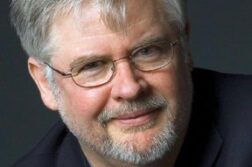The GLBT community has lost its most effective advocate from outside the gay world. Sexologist, activist, nurse, and historian, Vern Bullough died from cancer on June 21st at 77. With his passing, we have one less witness to what it was like to be on the front lines of our struggle for liberation when it was very dangerous to do so. It was a time for heroes.
Born a Mormon in Salt Lake City in 1928, Vern renounced that religion while a teenager. He received an introduction to homosexuality and its study through his wife Bonnie. Her mother, living in Las Vegas, had come out in the 1940’s as a lesbian and entered into a lifelong relationship with Berry Berryman. This couple introduced Vern and Bonnie to a side of life heretofore closed off to them. By the time they reached college, they were already publishing works about homosexuality. Vern eventually wrote, co-authored, edited, or co-edited almost sixty books, some with Bonnie, who was primarily a nurse, though she later gained a doctorate in sociology. To bring himself up to par about medicine, Vern picked up a degree in nursing from California State University in 1980, and the two wrote prolifically together on nursing as well as sexology.
But this was many years after he’d gotten his BA from the University of Utah, in 1951, followed by a doctorate in the history of medieval medicine and science from Chicago just three years later. Vern moved to Los Angeles in 1959 to begin teaching at California State University at Northridge, where he remained until 1980. He became a board member of the ACLU’s Southern California chapter—on the condition that the trend-setting chapter, the oldest in the nation, would acknowledge homosexuality as a civil liberties issue. He soon met and began working with gay activists Dorr Legg and Don Slater, who put him in contact with other daring L.A. pioneers: Jim Kepner, Harry Hay, Dale Jennings, with all of whom he managed to stay friendly through their own personal vendettas and splits. When Slater organized the first gay pride parade in L.A., Vern and Bonnie sat in the front seat of the lead convertible.
As Vern himself recognized, his most important book was Sexual Variance in Society and History (1976), financed by a $70,000 grant (then worth ten years of a professor’s salary) from Reed Ericsson, first published in 1976, a most diligently researched and enduring work. Vern classified societies as sex-positive, neutral, or sex-negative, and basically showed that most homophobia stemmed from Leviticus, the Sodom story, and the Pauline epistles, and that Jewish, Christian, and Moslem societies were far more likely to condemn and persecute sexual minorities than were other societies.
Vern’s work included major studies of prostitution, contraception, and all the “trans” people, work that led to a long friendship with “Virginia” Price, who always appeared in public dressed as a female and pioneered the transvestite movement. He edited a sex series for Prometheus Press that facilitated translations of Karl Ulrichs and Magnus Hirschfeld into English. But beyond all this, Vern fought for better recognition of homosexuals in history books and maintained that pederasty, or intergenerational sex, was historically common. He always supported the work of Bruce Rind, even when Rind and the American Psychological Association were unanimously condemned by both houses of Congress for publishing Rind’s skillful synthesis of all previous studies of the effects of intergenerational sex. Like Harry Hay, Vern never denounced nambla.
His list of affiliations and accomplishments impresses even the jaded likes of an old-time professor like me: board member on the ACLU, member of the Council for Secular Humanism, the Center for Inquiry, csicop, distinguished professor emeritus and later dean of natural and social sciences at SUNY–Buffalo, Outstanding Professor at Cal State–Northridge and a founder of its Center for Sex Research, president of the Society for the Scientific Study of Sex, a founder of the American Association for the History of Nursing, recipient of the Distinguished Humanist Award, and vice president of the International Humanist and Ethical Union.
Unlike his flamboyant role models Alfred Kinsey and Hirschfeld, Vern was modest and retiring. His writing and speaking styles were as unsparkling as his wardrobe. He looked and sounded like a Midwestern square at a Rotary meeting. In fact, he joked that although he frequented the most bizarre and libertine circles, he was a bit disappointed that no one ever propositioned him.
But behind the bland exterior was a genius: brilliant, indefatigable, generous, loyal, and inspiring. Accused of pedophilia because he served on the editorial board of Paidike, he was undeterred in supporting research into all variations of sexual behavior. A driven researcher like Hirschfeld and Kinsey—and subjected to similar threats—Vern remained surefooted and unflappable. Like them, but with degrees in history and nursing, he neglected no avenue of understanding, from the sciences and the humanities, to the fine arts, genetics, medicine, sociology, and psychology. Unlike them, he never collected much raw data himself, but he understood statistics and knew how to analyze and interpret such surveys.
Vern’s learnedness and high professional standing, combined with his nonjudgmental outlook, over the years established a vital link between the gay and straight communities. Facts are facts, and science is science, and no amount of wishing them away, no amount of pressure or calumny, ever deflected Vern from his mission—to learn the truth and communicate it to others.
Vern is survived by his widow Gwen W. Brewer, an emeritus professor of English literature at Cal State. His daughter Susan, his three sons, James Bullough-Latsch, Steven Bullough, and Michael Hayworth, and a grandchild also survive him.



